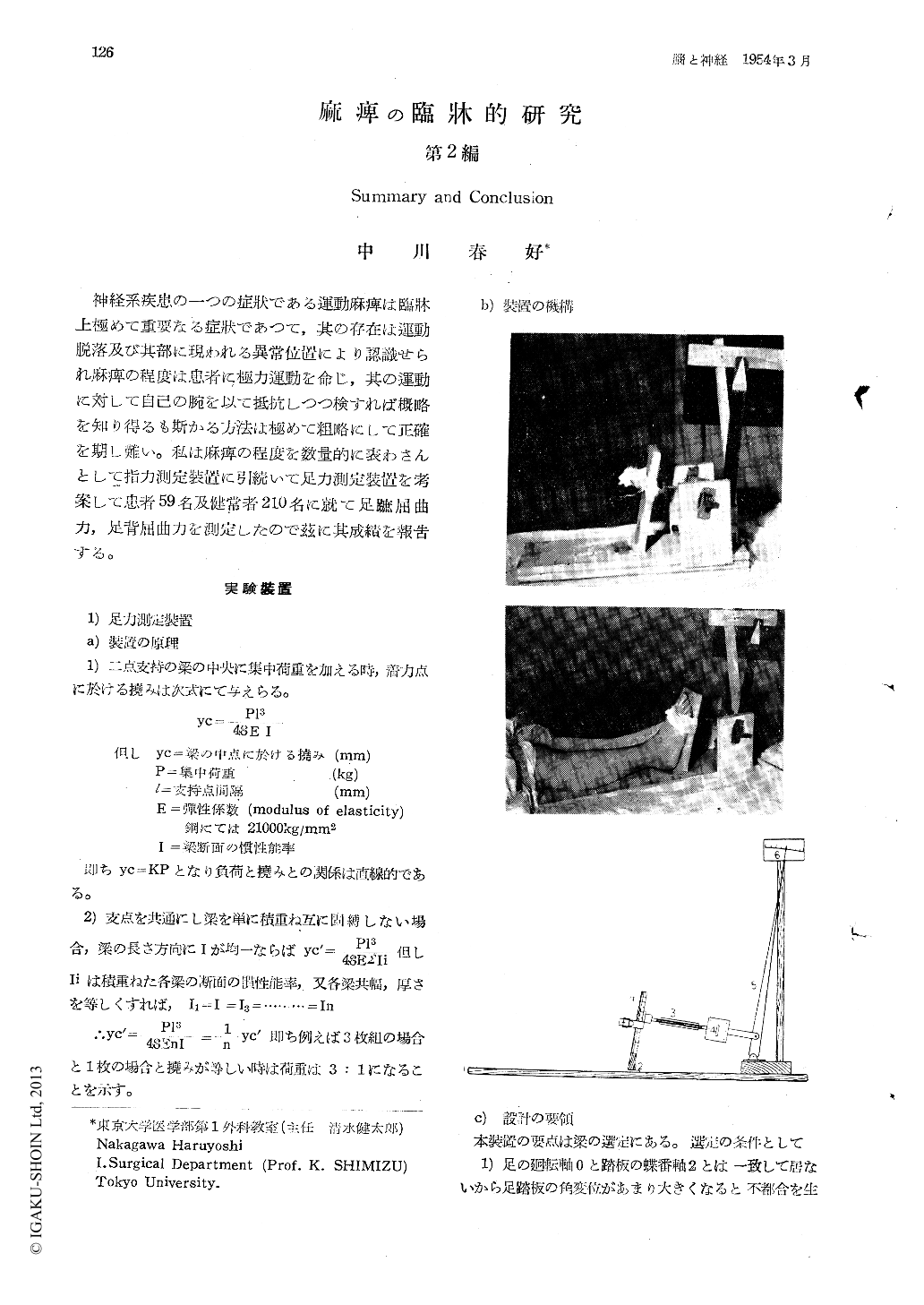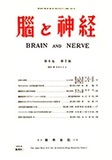- 有料閲覧
- 文献概要
- 1ページ目
神経系疾患の一つの症状である運動麻痺は臨牀上極めて重要なる症状であつて,其の存在は運動脱落及び其部に現われる異常位置により認識せられ麻痺の程度は患者に極力運動を命じ,其の運動に対して自己の腕を以て抵抗しつつ検すれば概略を知り得るも斯かる方法は極めて粗略にして正確を期し難い。私は麻痺の程度を数量的に表わさんとして指力測定装置に引続いて足力測定装置を考案して患者59名及健常者210名に就て足蹠屈曲力,足背屈曲力を測定したので茲に其成績を報告する。
1. The author devised an apparatus for measurement of the foot power based on the principle that the load and bending of the plate spring are in linear relation.
2. The plantor flexion power, the dorsiflexion power and the foot length were measured on 210 normal persons from 6 to 74 years of age (114 males and 96 females). They were classi-fied into three groups according to the age, the arithmetical mean, corrected recording to the foot length, of each group being regarded as the standard value. The circumferences of the leg and the thigh were measured at the same time.
3. The plantor flexion power, the dorsiflexion power, the foot length and the circ.mferences of the leg and the thigh were measured on 49 cases with nervous disorders and on 10 general surgical cases.
4. By the use of this apparatus one can easily measure the plantor flexion power and the dorsiflexion power and know whether paralysis is present at all or how far paralysis extends. The degree of paralysis can be well and quanti-tatively demonstrated by the author's "decre-ment of muscle power" (standard value-mea-sured value/standard value×100).
5. The chronologicel meassurement on one patient shows the change and the conditions of paralysis quantitatively and serves well to determine indications for operations and pro-gnosis and to evaluate the operative results.

Copyright © 1954, Igaku-Shoin Ltd. All rights reserved.


